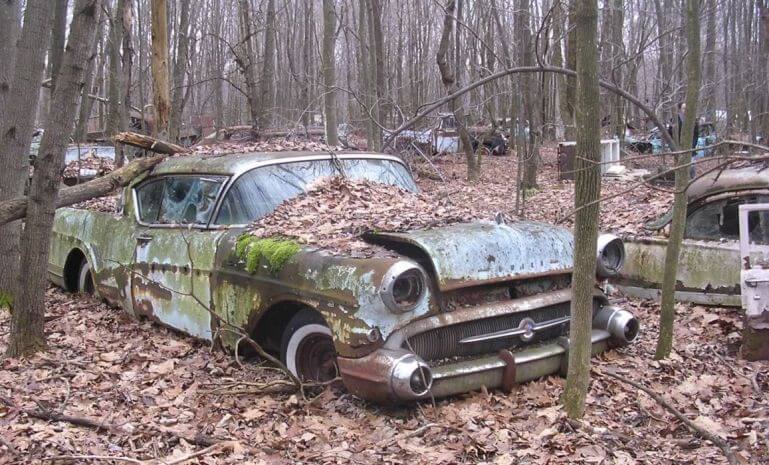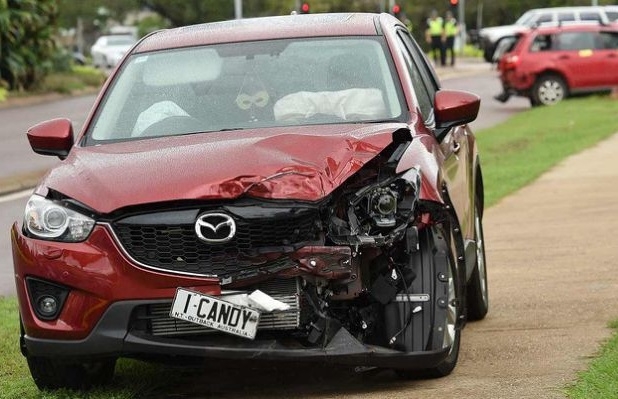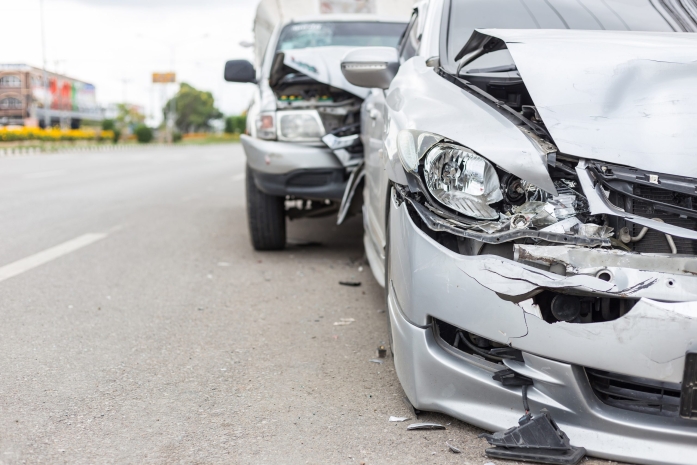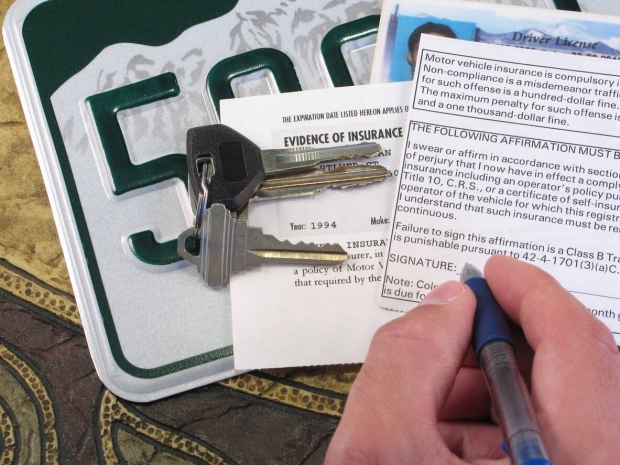Selling a car with a title loan might seem difficult, but it doesn’t have to be. If you’re looking for a quick and hassle-free way to sell a car with a title loan — whether it’s old or damaged — you can still get top dollar for it.
While selling a car with a lien on it requires extra steps, it’s entirely possible to get a fair price. If you plan to scrap your vehicle for cash or sell it to a private buyer, understanding how liens affect the sale and how to clear them can help you speed up the process.
But selling a car with a lien isn’t the same in every state — laws vary, and some places require extra paperwork to ensure a legal transfer. For example, in Texas, you must obtain a notarized release document from the lender before transferring ownership. In Florida, private owners cannot sell a vehicle with an existing lien — it must be paid off first.
Some ownership buyers specialize in handling lien payoffs to simplify the process for sellers. Understanding your state’s regulations can help you avoid legal issues and sell your vehicle quickly.
Can You Sell a Car With a Lien On It?
If you purchase your vehicle with the help of a loan or some other kind of financing, the name of the lending party is reflected on the car title as a lienholder. They partially hold ownership of your auto until you fully repay your debt. In other words, the lien is collateral that gives the lender the upper hand in the legal battle if you default on your loan payments. Those who want to sell their vehicles, even despite having title liens, usually face two questions:
- Is it illegal to sell a car with a title loan without the lienholder’s approval?
Yes, selling a vehicle with a title lien without the lender’s approval is illegal, as the property isn’t entirely yours as long as the debt isn’t fully paid off.
- Should you clear the lien from your car’s title before selling it?
Yes, selling is usually much simpler if the title is lien-free.
If you’re looking to sell a car with a title loan, look into your lender’s requirements. Since the lienholder holds partial ownership, you must pay your loan in full or obtain their approval before selling. While some people may be willing to work with you to remove the lien, a clear title simplifies the process and attracts more buyers.
Steps to Remove a Title Loan and Sell Your Car
The lienholder has a financial interest in your car until the loan is paid off in full. This can make selling a car with a title loan a bit more complicated, but it’s completely possible with the right approach. You just need to follow a few essential steps to ensure a smooth transaction and remove the title loan from your car. Here’s how:
Contact Your Lender
Remember that whilst you repay the loan on your car, the lender holds the lien on it. Until the debt is fully repaid, the holder has a direct financial interest in the property. That is, you gain full ownership over the vehicle only after the lien has been released. Until then, you must receive the lender’s permission to sell.
Tip: If your loan is almost paid off, consider making a final lump-sum payment to remove the lien before selling instead of opting for more monthly payments — it can make the process easier and attract more buyers.
Determine the Payoff Amount
Note that the loan payoff amount might differ from the outstanding debt specified on your borrowing statement due to the accumulated interest. In some cases, the borrower might also be charged early payoff fees for repaying the debt prematurely.
These extra expenses will increase the overall cost of your car loan. When negotiating the payoff sum with your lender, ask them about specific stipulations or recommendations for selling a car with a title loan to ensure a smooth and legal transaction.
Tip: If you’re unsure about your options, consulting a professional or your lender can help you choose the best approach.
Pay off the Loan Directly or Work with the Buyer to Pay the Lien
Paying the loan off directly allows you to claim full ownership of your vehicle. Once you receive a lien release on your car, you have the legal right to sell or trade it. As previously mentioned, you should find out how much you owe to your lending party first and make payments to cover the debt in full.
As an alternative, ask your lender about possible ways to get rid of a car with a lien while it’s still on the title. The lienholder might suggest contacting the dealership or vending the vehicle privately, with the prospective buyer covering the lien for you. Either of the two methods is feasible to satisfy the loan terms while providing the remaining funds to the vendor, i.e., you.
Prepare Required Documents
Depending on which approach you choose — selling or trading in your car at a dealership or having a private buyer pay off the loan — you’ll have to prepare different sets of documents. Still, no matter how you decide to part with your vehicle, you’ll likely need to hand in the following paperwork:
- Vehicle Identification Number (VIN): The 17-character code serves as a unique identifier for your car. It displays the auto’s registration, manufacturer details, insurance coverage, and more.
- Warranty paperwork: This is the manufacturer’s guarantee to cover expenses for any fault with the vehicle’s performance under negotiated conditions during a set time frame.
- Service and maintenance records: These documents include dated records of all repair and maintenance work done to your car.
- Automobile title. This legal document establishes the legal auto owner. If your vehicle has a lien status, it’s reflected on the automobile ownership certificate.
Tip: Before getting rid of a car with a lien, double-check if your local DMV requires additional lien release forms or a notarized letter from the lender confirming the lien removal. As we said before, different states have different rules.
Obtain a Lien Release and Update Your Title
After the debt on your vehicle is repaid in full, you receive a release. With this document, the lienholder gives up their claim on your auto. In most cases, after this, you will need to contact the local Department of Motor Vehicles to inform them about the need to update the car’s title. You can always use the DMV’s online database to confirm your vehicle’s status, if applicable.
Selling a Car with a Lien to Junkyards or Scrapyards
If you’ve Googled inquiries like “Can I junk a car with a lien on it?”, you probably have already discovered that scrapping a vehicle with a title loan isn’t a one-step procedure. What’s more, selling a vehicle that is not entirely in your ownership might raise legitimate concerns. So, what’s the best approach to selling a car with a lien to junkyards or scrapyards, and what steps should you take to make the process smooth?
Can You Scrap a Car with a Title Loan?
If your car has a title loan, scrapping it is only possible if the lien is resolved. Since the lender holds a financial claim on the auto, you must first pay off the remaining debt or negotiate with the lienholder for approval to proceed with scrapping.
Reputable junkyards check for liens on vehicles before accepting them for scrap. This precaution ensures compliance with legal requirements and avoids issues such as handling stolen property or disputed ownership.
Alternatively, you may sell the car with a title loan to a private buyer who can cover the lien balance as part of the transaction. This approach allows you to remove the lien and move forward with disposal or other plans. However, specific terms depend on your lender and individual circumstances.
How to Check Lien Status Before Junking
If you want to get rid of a car with a lien, start by reviewing the title, as it will indicate whether it is at all active. If a lienholder is listed, contact them to confirm the loan status and request a lien release if the debt is repaid. If not, inquire about the payoff amount required to clear the title.
Once the dispute is resolved, ensure your Department of Motor Vehicles has updated the title, which should now reflect its lien-free or junk status. As we have mentioned, junkyards will typically require proof that the lien has been addressed before accepting the vehicle. Always work with reputable junkyards and keep your paperwork in place to stay on the safe side.
What Happens If You Buy or Sell a Car with an Existing Lien?
If you buy a car with a lien, you must provide the remaining debt sum to the lender. Before signing up for this deal, do your research. Check the vehicle’s maintenance report, VIN, warranty paperwork, and, most importantly, its title and the specified payoff amount. The latter is what you’ll have to pay back to the lender to obtain full ownership of the auto.
If you decide to sell a car with a title loan, start by negotiating the terms and conditions of the transaction with the lienholder. Consider the option to pass your vehicle on to a dealership or a private buyer. Once all stipulations with the lien are settled, you can proceed with finalizing the sale of your automobile.
Get The Best Price for Your Junk Car with JunkCarsUs
If you're asking, "Can you sell a car with a lien on it?", the answer is yes — but it requires the right approach. At JunkCarsUs, we specialize in buying junk, damaged, and unwanted vehicles, even if they are no longer drivable.
Our team’s expertise can help you navigate the process, including how to remove the lien and ensure a fast, legal transaction. With top-dollar cash offers, free towing, and same-day pickups, JunkCarsUs makes selling your car easy and stress-free. Whether your vehicle is old, wrecked, or water- or fire-damaged, we provide a fair price and a smooth selling experience. Get cash for your car today with no hidden fees!





